By Anousha Vakani and Hajer Al Alwan
Artists from every corner of Sharqiya.
KHOBAR
RANEEN BUKHARI
 Tell us more about yourself.
Tell us more about yourself.
I’m a freelance art curator and art consultant. I graduated in 2008 and worked with several companies before finally deciding that I wanted to work with art. In 2012 I started working in Desert Designs – a company my parents started 25 years ago. Since then, I’ve been curating art workshops and helping artists work with different mediums.
What is your earliest memory of art?
The image of my mother painting in our house always comes back to mind. How she used to teach me how to draw and use colors. We did a lot of arts and crafts together when I was a child.
What inspires your art the most?
I get really excited when I go to workshops and see artists working passionately with something new. Seeing artists who push their boundaries is really inspiring to me. Some artists work digitally then they just print their art, and that’s fine. However, I really love to see artists who don’t just stick to their safe mediums, but get creative and invest and experiment with new technologies like 3D printing, work their muscles around a new technique, or just mix both digital and manual techniques.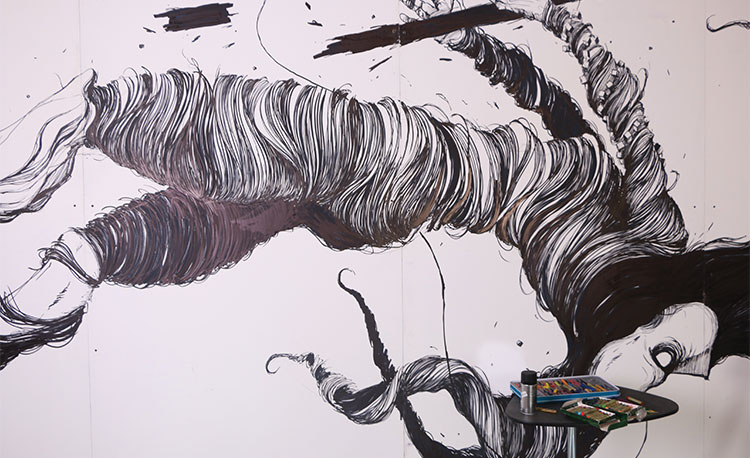
Who is the artist?
I don’t practice art as a fine artist does, but I also think that every one of us has an artist inside of them. I don’t believe in separating artists and other people because everyone can be creative in their own way. I’ve see artists who are business-minded and others who are just creating and don’t think practically about their work. I also think it depends on the type of art an artist does. I’ve met writers and musicians and these definitely have a different approach from other art practitioners.
What’s the most important thing for the work of an artist?
To practice and keep creating. Even if the artist is not intending to publish their work, it is important for them to continue creating and practicing whatever they do.
What do you think of art in Khobar?
There is a great development in Khobar. It is not like it used to be before. Artists here get way more support than they used to be, and it makes me happy to see this happening.
Where do you see art in Sharqiya going?
I know many artists from all cities in Shariqya including Jubail and Al Ahsa, and it’s nice to see how they’re working hard to show their work and make things better and easier for the upcoming generations of artists in such areas which still need so much work to develop.
Instagram: neenoism
Twitter: neenoism
DAMMAM
NAJLA ABDULLAH
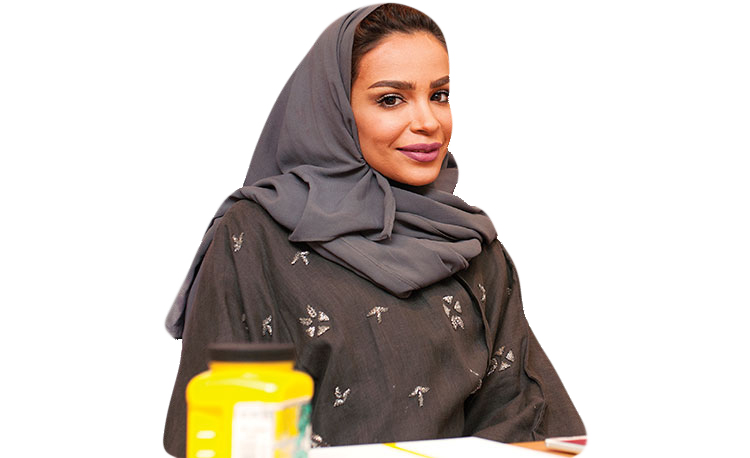
Tell us about yourself.
My interest in pop art started 10 years ago, introducing me to the greater world of art along the way. I attended an art residency in Dubai, and when I came back I started a small art business called Huna Art with Raneen Bukhari. Now we’re the official social representative for the Arts and Culture Association in Saudi. I give speeches and lectures about art regularly and I’m a professional art trainer.
What inspires you the most?
Music is always a huge inspiration for me. I learn about it all the time and it’s something that makes me happy just as much as painting.
What is the thing that catches your eye in any piece of art?
Some may find the message or concept behind a piece interesting, but I personally appreciate the techniques used to make it. It’s fascinating learning the approach and technique an artist uses to deliver their message.
When was your first encounter with art as a child?
In 4th grade, my teacher noticed my eye for art and she asked me to draw the best drawing I could draw. Later, she came back to me and told me that my drawing won 2nd place in an art competition for Saudi Aramco. Ever since then, I started taking art more seriously.
Where do you draw your style from?
My work is deeply influenced by fashion and fashion shows. There are certain trends and styles that are very relatable to the kind of art I do.
How does an artist’s outlook to life differ from anyone else’s?
I feel like art is inside all of us, but an artist is the person who can deliver it to others. Everyone appreciates beauty. A scene of nature is something that anyone can fall in love with, and to me that’s a form of art. So if anyone can appreciate nature, why can’t they also see the beauty behind art?
Where do you think art in Dammam is going?
It is pretty advanced. Dammam is full of artists, including film directors, actors and fine artists, and there are a lot of art studios here. Many art movements started here such as Seen TV channel.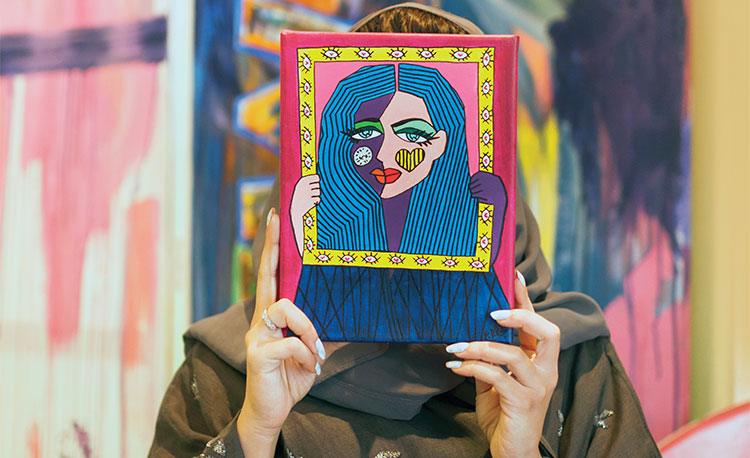
How about the art movement in Sharqiya in general?
Many of the artists in Saudi Arabia come from Sharqiya, especially Qatif. The art community in Sharqiya is still in its early days unlike Riyadh or Jeddah where it’s more spread and well acknowledged.
Instagram: najlabdullah
Twitter: najlabdullah
Facebook: najlabdullah
Snapchat: najlabdullah
JUBAIL
HASAN MDAWI
 Tell us more about yourself.
Tell us more about yourself.
I’m a fine artist. Originally from Asir region, I was born and raised in one of the villages in Namas Governorate. I moved to Riyadh to finish my bachelor’s degree in art education at King Saud University. Currently I’m working at the Royal Commission in Jubail. I have participated in multiple collective galleries inside and outside the Kingdom.
What is your earliest memory of painting?
I used to be obsessed with the pictures and portraits I found in my older brothers’ school books, and I tried to redraw them.
What inspires your art the most?
Ever since I was a boy, I’d always been inspired by nature. My work reflects the vernacular architecture, urban setting, and social life of the villages in Namas.
 How would you describe your work?
How would you describe your work?
My work is not influenced by modern schools of art. It does not have an abstract nature to it, and it’s a mere projection of my attachment to the nature of the villages I grew up in. I love this about my paintings because in a way, they too, deliver a message.
Most people do not know about the diversity of terrain in Saudi. When having galleries in foreign countries, I get asked a lot whether my paintings reflect the nature of an area here in Saudi Arabia. The main element in my paintings is human life. It is important to me that anyone who looks at my paintings can see the interaction between humans and the environment they live in. I want my paintings to be easy to understand even for people who don’t know much about art. 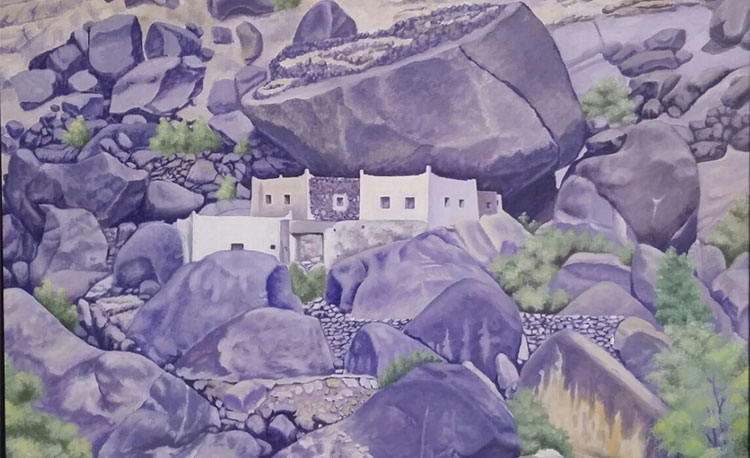
How would you describe an artistic outlook to life?
Many people in our society do not give art its true value and overlook the fact that art has had a role in building solid civilizations since the beginning of time. The artist is the one who reflects the culture and civilization of his to the rest of world, and any artist should be aware of this role.
What are your thoughts about development for artists and art enthusiasts in Jubail?
I don’t think it’s that active, since it’s a bit isolated from the more active centers such as Dammam and Khobar where you can find many art platforms and organizations, not to mention the Culture and Arts Association in Dammam.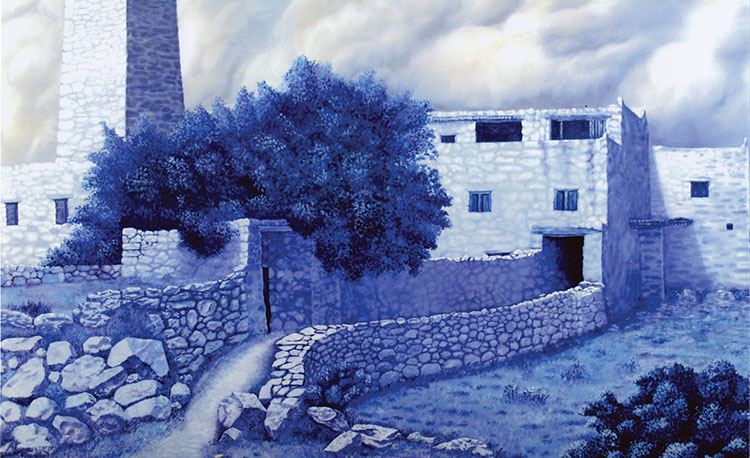
Where do you see the art movement in Sharqiya going?
The Eastern Province is the third most active area when it comes to fine arts and arts movement, and I’m full of hope that it’s moving forward as we see the opening of new authorities such as the King Abddulaziz Center for World Culture.
QATIF
ABDULADIEM AL DHAMEN
 When did you start to practice art?
When did you start to practice art?
I started during my days at King Saud University in Riyadh. In 1982, I displayed my paintings for the first time in a collective exhibition and I won 2nd place, which was a major boost for me. Three years later, I had my second personal gallery in the public library of the university, kicking off many more opportunities in and out of the country.
At that same time, I used to write in the university’s weekly newsletter, leading to writing for other newspapers and culminating with publishing my first book after graduation. This year I will be publishing my 12th book.
When did you develop your appreciation for art?
As a talent, it started when I was a child. Thanks to my teacher in 4th grade, he noticed my interest in art and took every opportunity to take me to the arts and crafts room at school.
I remember I sculpted a map on plaster when I was in primary school, and it was hung in the hall. Years later, I came back to teach at the same school and I found the map right where I left it.
When did you start developing your own personal style?
In 1988, I started experimenting with using decorative burlap sack material as elements within my paintings. It gave them their identity because I was one of first people who used it. I also incorporated and recycled pieces of ceramic and mud that were used in buildings from Tarot Island.
What inspires you?
The state of being in love and seeing love around is what inspires me the most. I feel inspired by positivity and like to project this in my paintings.
How would you describe an artistic outlook to life?
If there wasn’t a mission or a message that the artist wants to communicate through, then there’s no value for the art they make. Art without a message is just aesthetics.
What are your thoughts about the art movement in Qatif?
There is a great artistic movement in Qatif. However, this movement is limited to certain names and figures. The number of artists is considerable, but the ones that survive to the top are quite few.
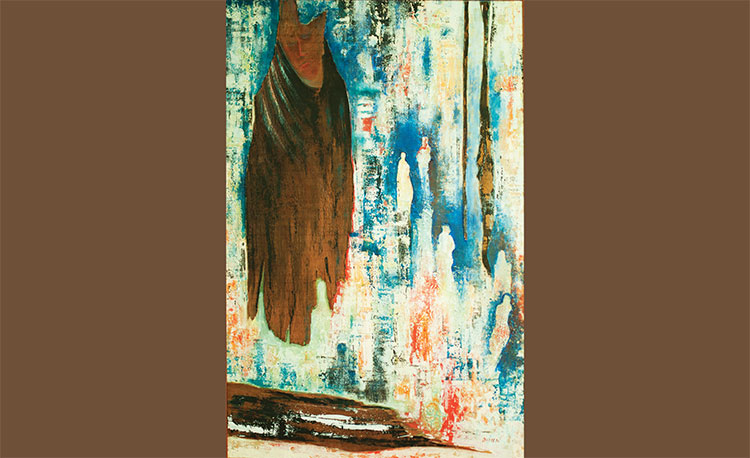 Where do you see the art movement in Sharqiya going?
Where do you see the art movement in Sharqiya going?
I really admire how there’s a lot of development in the area in general, but having no platform to exhibit and network led so many aspiring artists to either give up or seek somewhere else. It’s true that we use malls, stores and public spaces as galleries, but this makes the audience the general public instead of the closed circle of artists, art critiques and art enthusiasts.
Instagram: abduladeim
AL AHSA
TAGHREED AL BAGSHI
 Tell us more about yourself
Tell us more about yourself
I recently got my master’s degree in methodologies and techniques in teaching arts. I’ve had around 15 personal galleries and many other collective galleries. I think that life is about doing what we are most passionate about because without a dream, a human cannot exist.
What is your earliest memory of painting?
I was obsessed with colors as child. I used to experiment with colors and – a big thank you to my parents – they never minded the mess I made.
As I grew older, my art frenzy never lulled. However, there weren’t many ways to learn art in the area and it felt like being in a creative desert. During summer vacations in Syria, I used those opportunities to take courses at Damascus University and other places. Soon after, I took off with my own style.
What inspires your art the most?
It’s never one thing. There’s always a philosophy behind every piece I did, a message and a question: “Why?” I’ve always been obsessed with feminism, and that’s what I started with. Later on, my style started to advance towards the idea of human existence and experimenting with that concept.
My paintings are intended to provoke the audience. Every gallery started with a set of questions that I tried to communicate through my paintings.
What have you been up to lately?
I finished and exhibited my latest collection in Paris, where I spent the most inspiring two months of my life. At one point, several international artists and I were invited to exhibit our work in Cité Internationale des Arts (the International City of Art). Two months later, I wanted to share my experience, so I participated in a gallery called “Her” in Kuwait to represent Saudi and I sold most of my paintings there.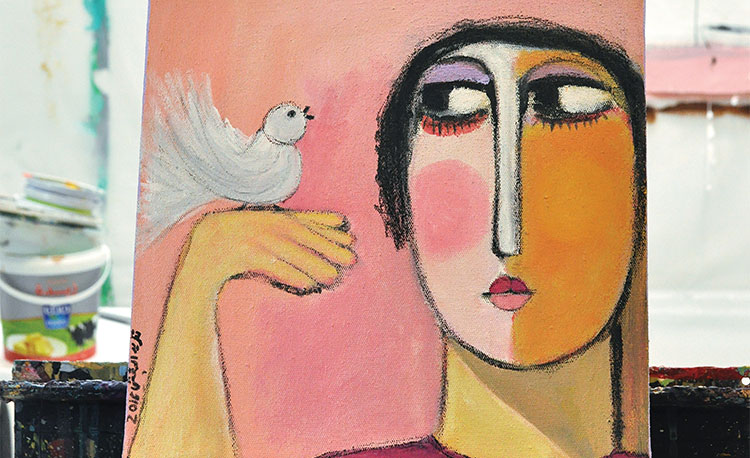
How would you describe your work?
My art speaks for me and for the causes of the society we live in, such as the issues of women driving, women’s femininity and a woman’s personal search for herself. My paintings are genuine, and it’s nice to see women relating to my paintings when they look at them. I consider this the biggest I achievement I made.
Is there an art community in Al Ahsa?
There’s definitely a seed for aspiring artists in the area, but there’s still so much work to be done. The road is not smooth. We still need authorized art institutions and centers to provide academic and professional training.
Where do you see art in Sharqiya going?
In general, we can see many well-established artists and poets as well as new aspiring ones in the area. But there’s still a need for a professional platform for networking and training for the artists in the Eastern Province.
Instagram: tagreedbagshi
Twitter: tagreedbagshi
Facebook: tagreedbagshi
Snapchat: tagreedbagshi










